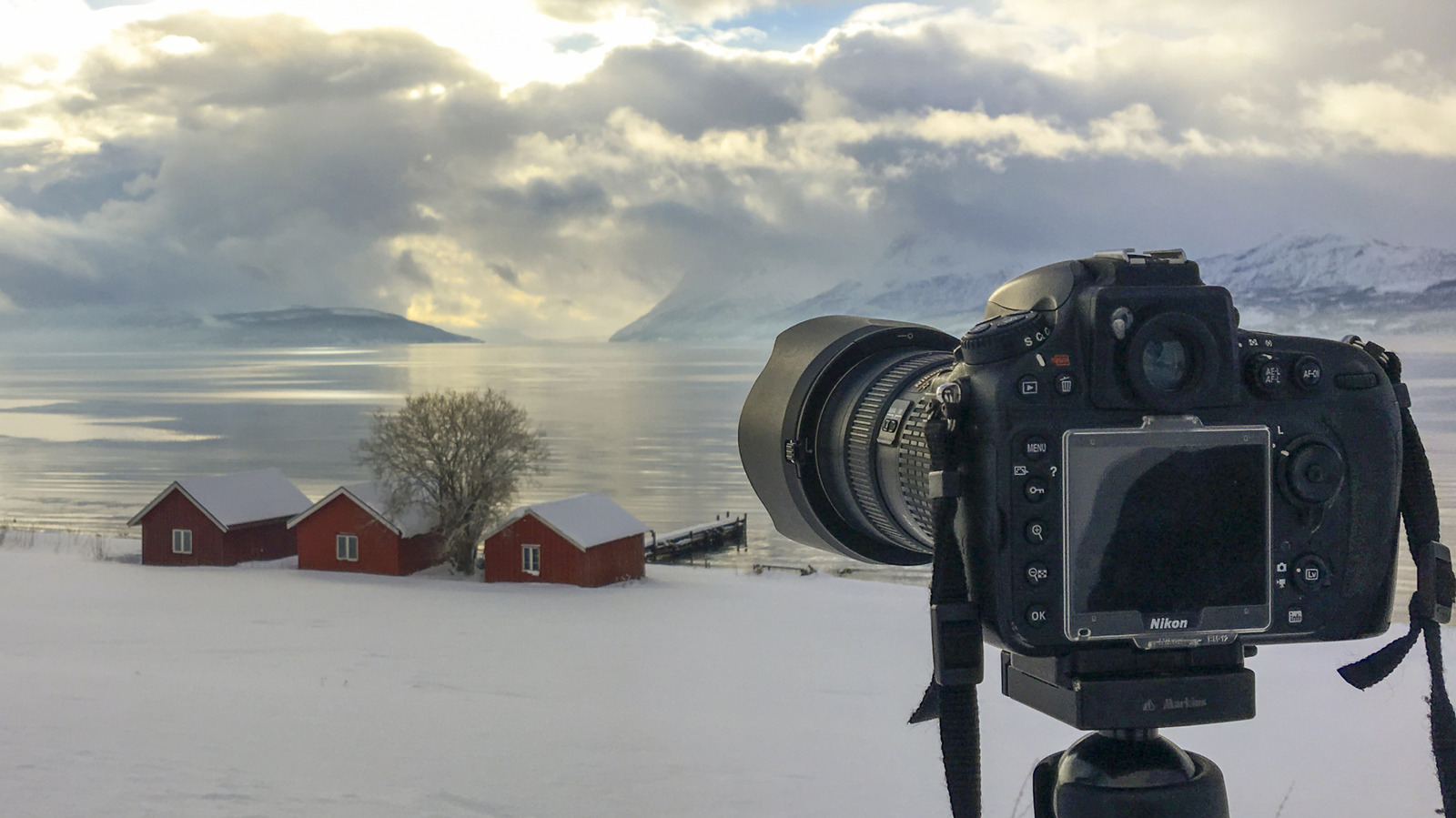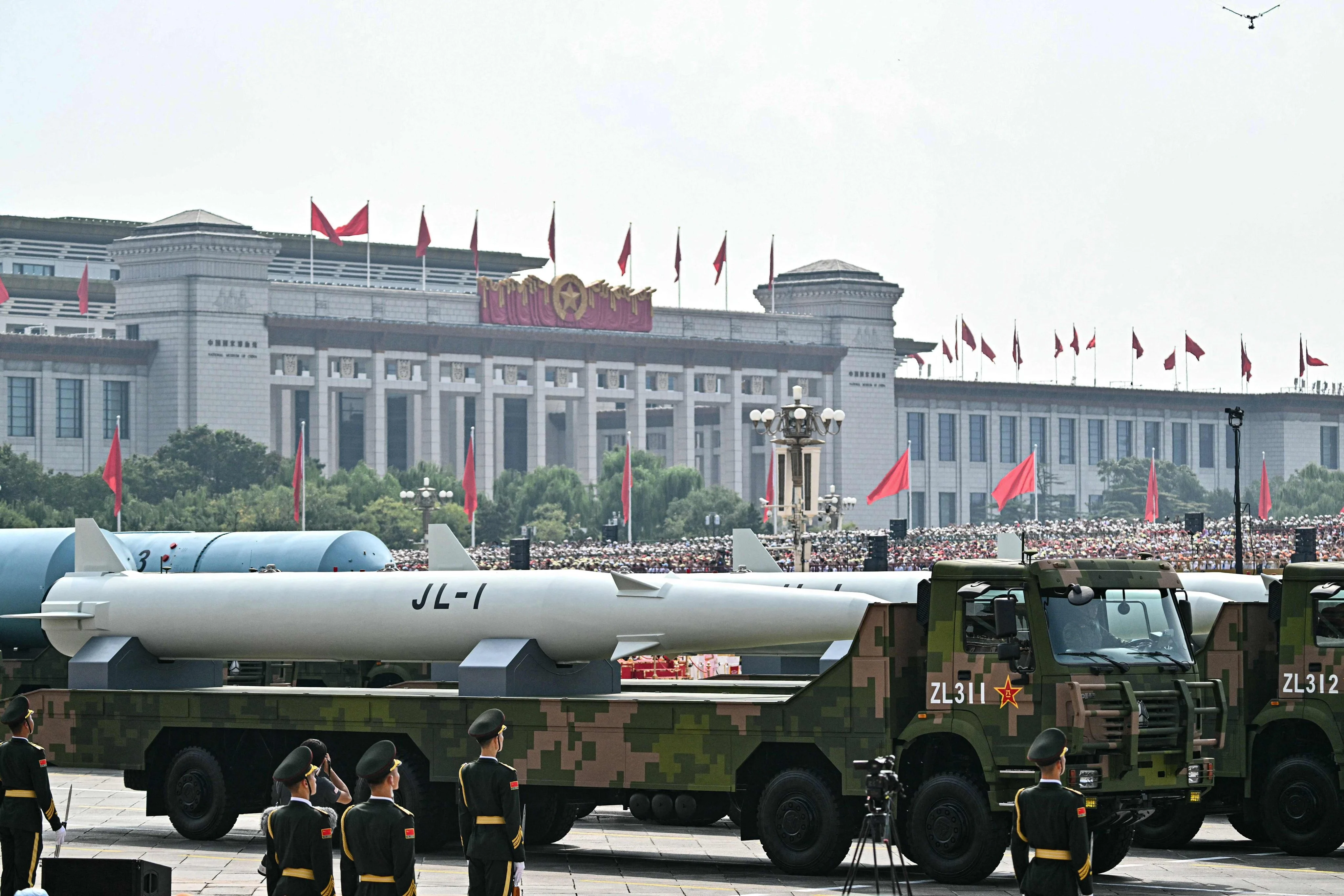
We may receive a commission on purchases made from links.
Once upon a time, professional-grade photography equipment might have cost you a month’s salary. Nowadays, with the used market offering outstanding value, you can pick up some excellent DSLR cameras that don’t cost much more than a decent smartphone. While everyone else obsesses over megapixels and mirrorless innovations, you could be picking up yesterday’s flagships for comparatively very little. And don’t think you’ll be getting inferior equipment. On the contrary. Smartphone technology may well be advancing, but DSLR sensors are well regarded for producing natural color, strong contrast, and good dynamic range with results that rival, or even better, many modern equivalents, even in budget and mid-range models.
Those old DSLRs were also built to last. With quality materials and weather sealing, they rarely let you down. They’re also renowned for excellent autofocus (AF) systems, while their batteries give you plenty of time for extended shooting sessions. Buying used lets you upgrade gear or step up into more advanced photography without a steep investment, and you can also access the huge second-hand lens market. Modern smartphones may well be offering things like camera coaches and photo-editing support, but you simply can’t beat the look, the feel, and — at least for now — the results of a DSLR. Here are some of the best secondhand DSLRs you can find today.
When the Nikon D800 was released back in 2012, it had an unprecedented 36.3MP resolution. It outclassed most other DSLRs at the time and even rivaled some medium-format cameras, but it did cost an eye-watering $3,000. More than a decade later, you can still find new units selling for close to that price, but on the used market, you can pick one up for under $500. The sensor captures exceptional detail that allows for considerable enlargements without compromising quality or requiring significant post-processing.
But it was the dynamic range that got many talking. At 14.4 stops, it’s strong and is a key aspect for landscape photographers or anyone shooting scenes where highlight and shadow detail matter. This range prompted the team at Photographytalk to proclaim it “exceptional for any camera, let alone one from 2012.” Color handling is also impressive, with out-of-camera JPGs beautifully rendered and vibrant with perfectly natural skin tones. So, if you’re a beginner looking for less editing or an amateur seeking professional results, you’re sorted.
ISO performance is strong, too. The camera yields excellent results at the lower end, and they are still pretty decent even when you start pushing into the extended range. For most scenarios, the 51-point AF system is reliable and accurate, although the occasional speed limitations reveal themselves when shooting action. The four frames-per-second (fps) continuous shooting also makes it less than ideal for capturing fast-moving subjects. So, it’s not really one for those shooting sports or stampeding wildlife, while the 1080p and slow live mode AF won’t cut it for serious videographers.
Launched in the same year as the Nikon D800, the Canon EOS 5D Mark III had a higher retail price of $3,500. It was particularly noted for combining advanced specs with all-around shooting capability into an ergonomic, well-built DSLR. Upon its re-evaluation some 12 years later, AmateurPhotographer called it a “masterpiece of professional camera engineering.” And, when you consider you can pick one up used for under $500 nowadays, it’s another example of the excellent value the second-hand DSLR market offers.
The Mark III features a 22.3MP full-frame sensor that can produce large, detailed prints. Skin tones receive consistent praise, as does the strong dynamic range and versatile color reproduction across different lighting and shooting scenarios. Whether indoors or out, or even in mixed light, the colors remain natural, so it’s ideal for many genres, including portrait and landscape photography. And if it’s landscapes you are shooting, the 3.2-inch LCD features a full-width electronic spirit level to help you with precise tripod setups and straight horizons.
The camera is also a decent choice for action shots with its accurate and fast 61-point AF system, which includes 41 high-precision cross-type points. Paired with its fast six fps burst rate, it’s suitable for most subjects other than highly demanding sports or high-speed action. Ergonomics are excellent, too, and are a highlight of the camera. It’s comfortable in the hands, and the controls are intuitive and well-placed. The weather-resistant body also handles well in rain, cold, and heat, so it’s a trusted device for traveling and shooting in extreme conditions.
When Canon upgraded the 5D series in 2016 with the Canon EOS 5D Mark IV, it boosted the full-frame sensor to 30.4MP. Surprisingly, the original retail price still matched that of the older model at $3,500, but nowadays, you can pick it up new for around $2,100. However, on the used market, it might be tricky to find the same value that the older Mark III offers. That’s because the Mark IV still holds a strong market position and has kept a high resale value. Some owners even report having sold their camera for almost what they paid. However, if you look around, it is possible to find one used for around $1,300.
The sensor captures exceptionally detailed images, with overall sharpness extending to cropped-in sections and large prints. Its dual processors ensure everything runs quickly and smoothly, eliminating the anxiety of frustrating delays when shooting. And if it’s action shots you are concerned about missing, the seven fps burst mode gives you a real advantage with moving subjects, from freezing moments in a soccer match to energetic kids at a birthday party. Just like the Mark III, the 61-point AF system includes 41 cross-type points to lock onto subjects quickly. It tracks reliably even in tricky light, and, in live view or when recording video, the Dual Pixel AF also makes shooting a whole lot more pleasurable. Upgrades do extend to video as well, with the Mark IV offering cinematic DCI 4K video, which PetaPixel pointed out was “a significant upgrade over the Mark III, which topped out at Full HD.”
The Nikon D700 is an older model that was released in 2008. It absolutely doesn’t have any seriously advanced tech or the AI features of modern camera phones, but it retains timeless appeal among photographers, thanks to its old-school manual shooting experience. It’s ideal for learning the ropes, and when you consider you can pick it up for under $400 used, it’s an inexpensive introduction to DSLR photography.
The 12.1MP full-frame sensor may not sound particularly high by modern standards, but PhotographyTalk assures us the image quality is still “holding strong.” Colors are well-balanced, skin tones are true-to-life, and the dynamic range is impressive. You can use this camera for shooting landscapes, portraits, or any other genre, really. Even the five fps (eight fps with battery grip) burst shooting is enough for all but the most demanding action scenarios. Additionally, the 51-point AF system features 3D Focus Tracking, which was cutting-edge at the time. Today, it’s still pretty fast and accurate, and it will help when shooting things like sports and wildlife.
The Nikon D700’s low pixel count means heavy cropping or large prints will be on the soft side, and with a complete lack of video capability, anyone interested in this camera should be focused on still photography only. There’s also no electronic viewfinder (EVF) — so no touchscreen and no live view focusing. Everything is through the optical viewfinder, which just reinforces the point that this is one of the best cameras to learn photography basics on. Low-light performance is excellent. The ISO range of 200 to 6400 is expandable to 25,600, with images very clean at lower ISOs and minimal noise at the higher end, while the magnesium alloy weather-sealed body and 2.5-pound weight give it a tank-like feel.
In 2017, Nikon released the D7500. It focused on advanced hobbyists who required a bit more speed and greater buffer depth. It wasn’t quite Nikon’s flagship model, but it did bring professional features like the EXPEED 5 image processor and the 51-point Multi-CAM 3500DX II autofocus into a lighter, more affordable body. That AF system features 15 cross-type sensors, and tracking is fast and reliable, although the focus points are relatively large, which can make pinpoint focusing on very small subjects a little tricky.
The camera features a 20.9MP APS-C sensor, and images are vibrant with natural colors and a dynamic range that captures good detail in both shadows and highlights. The ISO performance delivers clean results up to ISO 3200. It’s expandable all the way up to 1,640,000, but practical noise control starts to drop off at 6400. Its suitability as an action shooter is underpinned by the eight fps burst rate and a 50-shot RAW buffer. If you’re looking to shoot sports, wildlife, or any fast-moving subjects, this DSLR can meet your needs without bankrupting you. You can pick up the D7500 used for under $600, but even new, you’re looking at prices ranging from $800 to around $1,000, which TechRadar states is “great bang for the buck.” The buttons are tactile, and the grip is deep and comfortable. Additionally, the weather-sealed carbon-fiber body is lightweight, yet it still hits the durability standards you expect from a Nikon DSLR.
Nikon launched its full-frame DSLR with a tilting screen back in 2014. The Nikon D750 helped photographers to shoot at awkward angles, and nowadays it’s a great feature for beginners learning creative composition or ground-level macrophotography. At launch, the camera cost $2,300 in the U.S., but today you can find one for under $600 on the secondhand market. As it is classed as an all-rounder, it’s ideal for portraiture, landscapes, events, or just everyday hobbyist shooting. Some advanced users and professionals even use this camera as a backup due to its reliability and balance of features. The 24.3MP sensor produces high-quality images, with color rendition and contrast both excellent straight out of the camera. So much so that it’s a dependable choice if you just want to focus your time on shooting rather than getting involved in excessive editing.
Landscape shooters will be delighted with the impressive dynamic range of 14.5 exposure value (EV) at ISO 100. This allows for easy recovery of shadow and highlight detail, while general ISO performance is strong with clean results up to 3200. Usable images up to 12800 mean the camera also offers competitive noise control for low-light shooting, whether that is indoor events or blue hour sessions after the sun has gone down. Additionally, the MultiCam 3500 II AF system works well in low light down to -3 EVs, which is suitable for most genres, including moderate action. However, the AF in live view is slow, and while the 6.5 fps burst rate is capable of capturing fast-paced sequences like running kids or jumping pets, the buffer may limit the sustained bursts needed for high-end sports.
The Pentax K-50 is a strong recommendation for beginners who require a weather-sealed, reliable DSLR at a rock-bottom price. Advanced amateurs may even see it as a good option if they need a budget workhorse, although professionals will likely wish for more AF points and faster performance. This camera is built like a tank with a robust body that feels reassuringly solid in the hand. And it’s that rugged build that makes it especially ideal when outdoors, particularly in nature. The 81 weather seals are rare in a DSLR of this price, and the grip and layout are comfortable for prolonged use. This means that outdoor shooting sessions can be lengthy, and rain, snow, or hail will only serve to enhance your shots.
Pentax’s lower brand recognition compared to Nikon or Canon does mean this camera can be picked up for quite a bargain on the used market. In fact, it’s often available for under $300. However, it’s not just about affordability and standing up to the elements. Image quality via the 16.3MP APS-C sensor is solid, with details suitable for larger prints. Shadow recovery in images is also good, so this allows beginners to experiment with exposure and editing. Additionally, Pentax included its sensor-shift image stabilization to help with getting sharp handheld shots, while the six fps burst mode is fast enough to capture moderate action. However, with just 11 AF points, the autofocus is somewhat limited. Tracking very fast or erratic subjects can be a bit of a challenge, and the video quality falls short of the recommended standard if that is your priority.
Experienced hobbyists and outdoor shooters looking for a capable APS-C camera with full weather sealing, advanced user controls, and a competitive price should consider the Pentax K-3. At launch back in 2013, Pentax introduced an industry-first AA filter simulator on this camera. It’s a feature that vibrates the sensor to reduce false color and unwanted patterns (moiré) in photos, while still allowing users to turn it off for maximum sharpness. The camera also set new standards for detail, frame rate, and buffer size in an APS-C DSLR. On its release, the K-3 was priced at $1,300, which placed it firmly in the enthusiast market and was noted as offering exceptional value compared to its competitors. However, you’ll be pleased to hear that you can now pick it up on the used market for around $500.
Image quality held up well against its competitors at the time, and the exceptionally well-detailed photos the 24MP sensor produces still hold up. Color rendition and dynamic range are excellent, and with high-speed continuous shooting up to 8.3 fps and a large buffer, the K-3 can handle the action. It’s also a good shout for budding astrophotographers thanks to its Interval Composite mode. This allows for in-camera multiple-exposure stacking into a single RAW file, meaning you can capture star trails without filling up your memory card. You might not use it for a 12-year shot of the Milky Way, but it is an excellent camera to practice celestial shooting, nevertheless. However, because its AF tracking isn’t as fast as some competitors, it’s best for subjects that move in a predictable way, such as dancers or playing pets. Live AF also trails competitors, so it isn’t really a camera for videographers.
The Canon EOS 5DS R still enjoys a fantastic reputation among experts. In fact, Digital Camera World insists it “still destroys every other Canon camera.” This is a DSLR that professionals and enthusiasts alike turn to when they want ultra-high resolution at low ISOs but don’t want to invest in a premium medium-format camera. The 50.6MP full-frame sensor still boasts Canon’s highest resolution to date and, on its release in 2015, was the highest of any full-frame camera. The 5DS R also lacks an anti-aliasing filter, which ensures extra sharpness and detail for studio and print photographers, and it’s this that distinguishes it from the Canon EOS 5DS, which includes the filter to reduce unwanted moiré.
At low ISOs, the 5DS R’s images are virtually noise-free. However, color and detail begin to deteriorate past ISO 640, which makes it a camera specifically for low ISO shooting. So, if you seek a DSLR for studio work, product shots, architecture, real estate, landscape, or any job that requires large, detailed prints, this is your camera. If it’s fast burst rates, advanced autofocus, high-ISO performance, or cutting-edge video features you’re after, look elsewhere. Google, Samsung, and Apple may be revolutionizing smartphone cameras, but the Canon EOS 5DS R excels in specific jobs, and that niche focus means it isn’t cheap. At its launch in 2015, it would set you back a whopping $3,900. However, if you search around the used markets today, you might be lucky and pick one up for under $1,200.
If you seek an affordable DSLR on the used market for shooting action, the Canon EOS 7D Mark II is another to consider from the Japanese giant. With a 65-point all cross-type AF system, it’s built for capturing fast-moving subjects. Birds in flight, stampeding wildebeest, high-octane sports, and energetic kids pose no problem for this high-value camera. In fact, James Artius, who writes for Digital Camera World, said, “The last time I picked up the Canon 7D Mark II, I was blown away by just how usable it still is.” Focus tracking is fast and accurate, and the 10 fps continuous burst mode can freeze the action like a rabbit in the headlights. Even the buffer, while not infinite, is more than adequate for most action scenarios.
The 20.2MP APS-C sensor has a 1.6x crop factor, which effectively increases the reach of any lens. It’s compatible with all Canon EF mount lenses, and telephotos pair particularly well for those action shots. And while 20.2MP is far from groundbreaking in today’s market, shots are still sharp and punchy. However, this is less so in low light. While still of reasonable quality, Canon’s newer mirrorless models have surpassed it. But it is weather sealed with comfortable handling, and its durable build stands up to demanding outdoor use. All in all, the 7D Mark II is a cost-effective entry into action photography, offering excellent value for beginners on a budget.
We looked to the most authoritative roundups of the best DSLRs to buy used to discover what the professionals were saying, including Amateur Photographer, Digital Camera World, and Pop Photo. We also looked to forums like Reddit to find out what enthusiasts were saying. The result was a long list of recommended models known to balance performance and value. We then looked to find recent professional reviews of these cameras, and those modern re-evaluations helped us to see if they were indeed still worthy today. We whittled down our list to a top 10 based on their recommendations.



